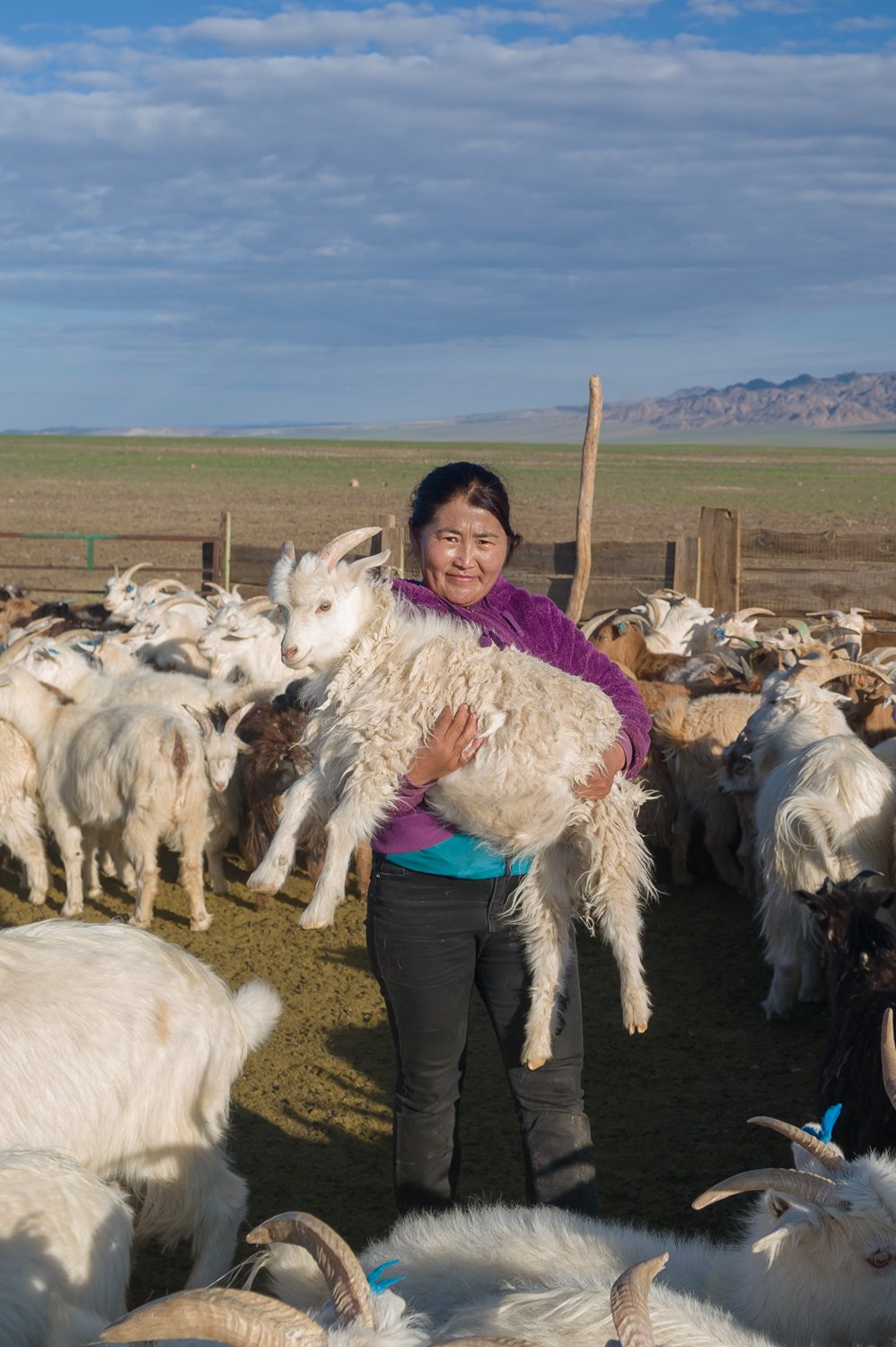Off the Map in Mongolia
I feel like these are the first deep breaths I have ever taken, as if I have been searching for this, thirsting for this my whole life. The sense of relief is amazing.
Maybe it’s the freedom of living under an immense unbroken sky, feeling as if I can sense the arc of the sky as it stretches out around me, the rotation of the planet throughout the day. Or the profound silence which allows me to tune in to nature, undisturbed by man-made noise, unbroken by even a distant car or airplane. Or the peace of the landscape itself, an entire country largely unaltered since the era of its most famous citizen, Genghis Khan, when the rest of the natural world is in disarray. It is probably a combination, and intangible elements, that make Mongolia so special.
The external silence and wildness, overcomes the internal to do list which usually runs nonstop in my head. Of needing to be many places at once, responding and multitasking. I am wholly present and quiet in myself in a way that makes me want to cry and hold onto it forever. Standing in so much unbroken wildness feels miraculous. There isn’t a road in sight, I am off the map in the Gobi Desert crouched outside our ger listening to the silence.
The only faint signs of humans across the landscape are the white dot of a ger in the distance far down the valley, specks of grazing livestock, and faint dirt tracks, often barely evident and highly optional when driving. Humans leave few marks on the harsh bone strewn land, and it feels like magic.
But, modernity does reach Mongolia. Climate change is impacting even these relatively unpeopled landscapes. All around the world, those who contribute little to climate change, who live lives intertwined with nature, are bearing the brunt of the initial challenges from the changes. In Mongolia weather patterns have become more erratic and extreme, killing livestock and humans alike who adapted to harsh winters at -40 and hot summers over 80 but now are dealing with less predictable seasons and more frequent droughts and dzuds (a summer drought or unusually killing cold in winter). With the western demand for cashmere, the steppes, even the deserts, are being overgrazed, threatening Mongolia with desertification. These new challenges are what bring me to Mongolia. That and large fluffy gorgeous black dogs.
I am traveling through with Baataraa Tomorbaatar, the Project Manager of the Mongolian Bankhar Dog Project, camping and staying with herding families who own working Mongolian bankhar dogs. We are in the midst of our week in the Gobi Desert, and I am in love with this place in a way I never expected.
Bayart Od and Oyun Bileg, welcomed us to their fall ger camp. The huge valley is tucked up against a key Snow Leopard Conservation area so the placement of bankhar dogs here is essential. As a respected community member, Bayart Od received the first puppies in the area, Huder a female and Bankhar a significantly larger male, and was critical at bringing other local families on board. Now grown, Huder runs out and happily greets us, recognizing Baatara when we arrive at the ger camp, but Bankhar is hiding from the heat somewhere. Huder is warm to us, but the dogs are fierce and effective guardians of all their flock, human, animal and property. Bayart Od proudly tells us that non bankhar owning neighbors give the house a wide berth.
The livestock guardian dogs are thought to predate modern dogs but were almost wiped out during the communist era which sought to eradicate all cultural heritage. The return of this culturally important dog is part of a conservation initiative, to protect the ecosystem, livestock and in turn predators. LGDs work symbiotically within an ecosystem assisting at all levels by protecting livestock, making the challenging lives of herders easier which in turn protects the predator population, and the greater ecosystem. The MBDP has been carefully breeding bankhars, giving pups to committed herders, assisting with training protocols and dog medical care, and documenting progress and efficacy. Mongolian bankhars are fierce, loyal, intelligent dogs, training them is hard work but once trained it is like another set of human hands.
Every morning Bayart Od and his wife Oyun Bileg tie their female cashmere goats together, head-to-head, like a living, bleating zipper. The goats object when they are grabbed, but then go back to chewing once tied together. In a land almost without fences, collectively they become an anchor. Bayart Od and Oyun Bileg crouch their way up and down the line milking each goat. Most mornings Huder lays nearby off duty after a long night of guarding us. From the safety of the ger, I can hear her menacing growl, followed by intense barking, and wonder what she is fending off, so we could sleep safely.
Oyun Bileg spends her days processing the morning's milk into stable dairy products and making meals from scratch. Milk is turned into curds, cream, cheese, yogurt, kefir, and evaporated into alcohol. And in between all this, like a dance, she fluidly hosts us with warm salted milk tea and snacks. The efficiency of the cloth ger as a multipurpose living space is fascinating, like a tiny perfect ship. And the cloth on the outside reflects the last heat summer, while the wool fleeces on the inside insulate the home.
One-night, after dinner, Bayart Od shows us photographs taken on his camera trap in the mountains; marmots, birds, foxes, walk into the shot, and then finally the wolves and snow leopards. Other animals dash by the camera, but the snow leopards pause, perfectly in the frame. As if to say, “I know you are there.” Sitting inside the cloth ger only a dozen kilometers away from those massive paws and intelligent eyes, feels very different than back in home when the cats were just an idea. My chances of seeing a snow leopard are nil, they are famously elusive, gray ghosts, but the feeling of vulnerability with a predator perfectly adapted to its habitat is primal. It is hard to imagine what it is like at the herding winter camps, living in the mountains where the snow leopards cohabitate. Still, if the predators are to survive, herders like Bayart Od know we must find a way for them to coexist with humans, as it is the humans, as always, who are the true apex predator.
In the morning, we head out. I am excited to move on but have also become fond of the family. Despite the language barrier, they have been kind and welcoming and I know we have an affinity for each other, trading jokes that surpass language and stories that require Baataraa’s patient translation over cups of vodka and hot seabuckthorn juice that I helped harvest. Although not much older than me, with classic Mongolian hospitality, Oyun Bileg has fed and mothered me in a way I have not been cared for in decades. I will miss them.


















